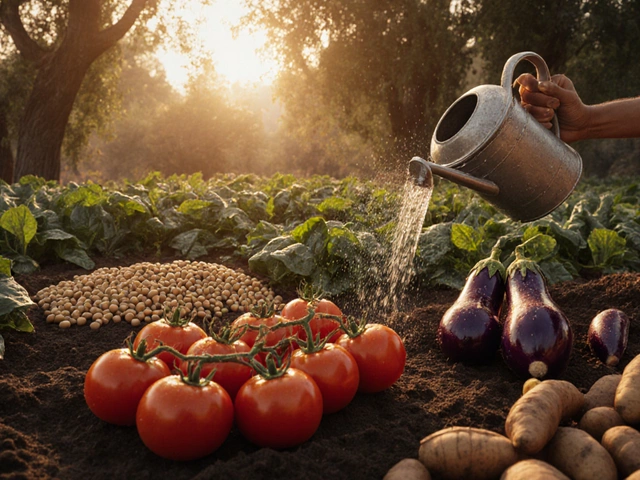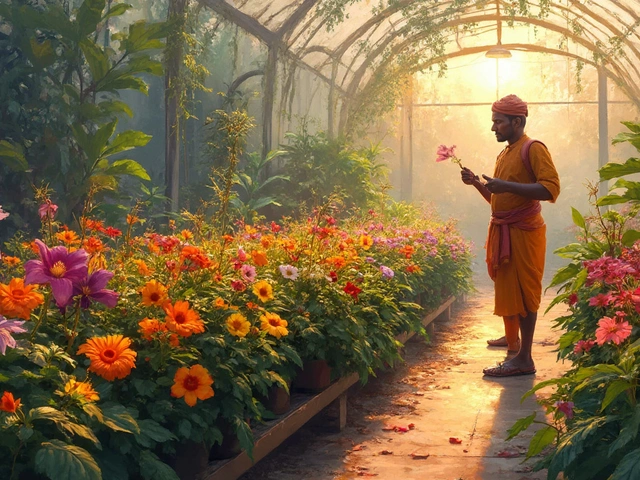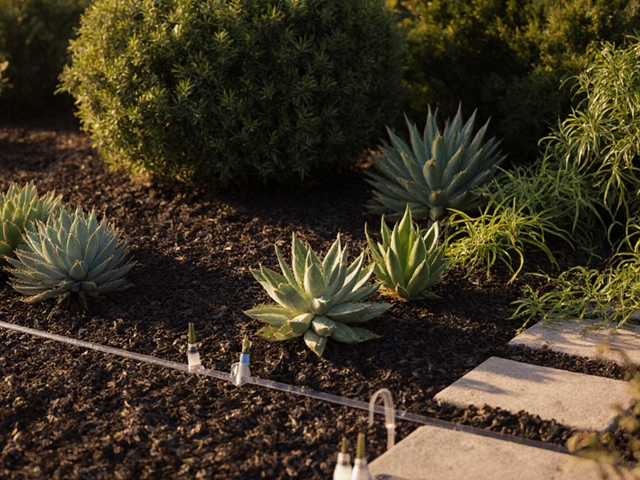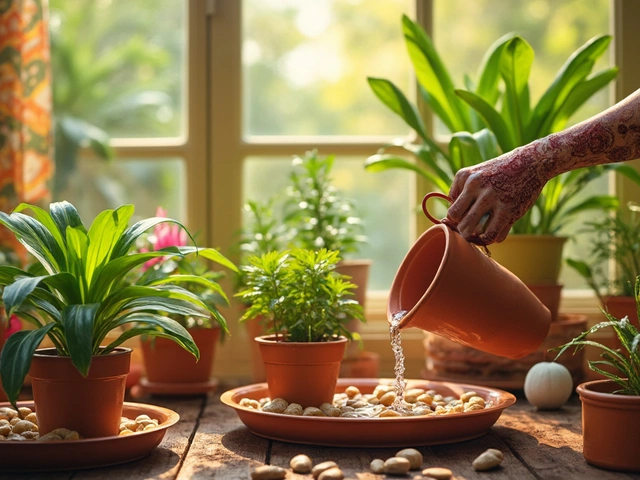Year-round Gardening: How to Keep Your Garden Productive All Seasons
Want fresh veggies or blooming flowers no matter the month? It’s easier than you think. By planning, using the right tools, and mixing outdoor with indoor growing, you can enjoy a garden that works all year.
Plan Your Soil and Water Early
Good soil is the backbone of any garden, and it stays important when the weather changes. Start by adding compost in the fall; it breaks down over winter and gives microbes a boost for spring planting. If you have heavy clay, mix in sand or coarse organic matter to improve drainage. When the monsoon arrives, mulching with straw or dry leaves keeps the soil warm and reduces water loss.
Water management is another game‑changer. Drip irrigation lines buried at the right depth (usually 2‑4 inches) deliver water right to the root zone and cut evaporation. A simple drip tape can be set up in a raised bed for tomatoes, while a drip line works well for larger fruit trees. Both options save water and reduce the risk of fungal diseases caused by wet foliage.
Choose the Right Plants for Each Season
Spring and summer are perfect for heat‑loving crops like okra, bhindi, and chilli. In the hot months, shade nets protect tender lettuce and herbs from sunburn. When the temperature drops, move to cool‑season veggies such as cauliflower, carrots, and spinach. You can also grow these on a balcony or windowsill using pots and indoor lighting – a trick that works well for houseplants and small herbs year‑round.
Companion planting helps keep pests away and improves yields. Pairing basil with tomatoes or marigold with beans reduces disease pressure without chemicals. For a continuous harvest, stagger sowing dates every two weeks. That way, you’ll have a steady supply of greens instead of a big rush once a month.
Don’t forget fruit trees. Fast‑growing flowering trees like Bauhinia or Indian plum can shade vegetable beds in summer and drop fruit in winter, giving you both shade and fresh produce. Prune them during the dormant season to shape the canopy and improve air flow.
Finally, keep an eye on the climate in your region. Indian gardens often face extreme heat, heavy rain, or dry spells. Using rain barrels to collect monsoon water and a simple greenhouse or poly‑tunnel can protect seedlings during unexpected showers or cold snaps.
By mastering soil health, smart watering, and seasonal plant selection, you’ll turn your garden into a reliable source of food and beauty all year long.
Best Year-Round Plants: Which Hardy Variety Thrives in Every Season?
Discover which plant survives and looks great in every season, plus real-world facts and tips to keep your garden or home looking fresh no matter the weather.
About
Seasonal Plants
Latest Posts


What Not to Grow in a Greenhouse: Avoid These Flower Flops
By Alden Thorne Mar 24, 2025

Best Low‑Maintenance Garden Ideas for Sustainable Living
By Alden Thorne Oct 21, 2025

Longest Growing Vegetables for Your Balcony Garden
By Alden Thorne Feb 15, 2025

